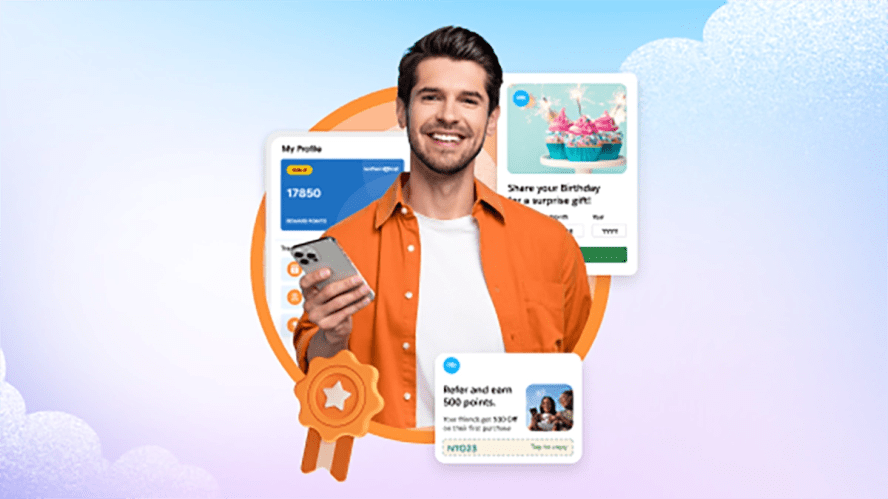The Australian loyalty market is evolving quickly. Valued at approximately US$4 billion, the market is experiencing a strong annual growth rate of around 13% according to Ellipsis company Loyalty Central. And there are more active loyalty membership accounts in Australia than cars on the road, by a factor of three.
In an era of heightened customer expectations, these programs have become table stakes for retaining attention, sustaining preference, and ensuring reliable revenue contribution. However, influencing the heads, hearts, and habits of customers is increasingly challenging. Customers want more than points and discounts. They crave genuine connection and ‘money-can’t-buy’ experiences.
Still, some loyalty programs continue to focus exclusively on transactional rewards, entirely missing the human element of engagement that has been proven essential for cementing customer loyalty.
In my role at Salesforce, I have the opportunity to help brands avoid this pitfall and reimagine their loyalty strategies. This reimagining typically involves reevaluating who they are as a brand and what they represent to their customers, and then helping them transform into a more transparent, trustworthy, and engaging version of themselves.
This strengthening of a brand’s customer value proposition is one of three key pillars for building lasting loyalty.
Unlock lasting loyalty: Your guide to building brand advocates in the agentic era
Find out why leading brands are moving away from transaction-based loyalty programs and adopting an enterprise-wide approach to building lasting relationships.



3 essential pillars for building lasting loyalty
Pillar 1: A strong customer value proposition
A loyalty strategy is only as strong as its core promise to the customer. A compelling value proposition recognises that customers want to feel understood, valued, and connected to the brands they support.
Loyalty leaders recognise this and are actively redefining their customer value propositions to deliver more human and personalised interactions. Experiential rewards are one example. From elite ‘money can’t buy’ experiences to more ordinary events like the opening of a new store, customers appreciate brands that allow them to touch, feel, and experience their products.
Formula 1 team McLaren Racing has tapped into this desire for personalisation by giving customers customised experiences. For example, when fans sign up for the McLaren Paddock Club, an in-person luxury experience at a race, the Brand Experience Team has immediate access to their names, engagement history, driver preferences, and past purchases.
This allows for a highly personalised experience from the moment they walk on site. McLaren has all the details on hand, such as the guest’s t-shirt size, to make more memorable experiences. After the race, the team at McLaren Racing can then use customer data to tailor personalised follow-up communication, like emails that suggest merchandise based on previous purchases or mention the fan’s favourite driver.
Strategies like these build customer loyalty and trust.
Pillar 2: A foundation for data-driven engagement
Seventy-one percent of customers are increasingly protective of their personal information, and only 49% of customers think companies use their data to their advantage.
This sentiment is easy to understand. Once consumers are willing to share details about themselves, their households, preferences, and needs, as designers of experiences and moments of engagement, it is our responsibility to transform that data into actionable insights that we can use to engage even more deeply.
Success depends on a strong foundation for data-driven engagement. This includes:
- Unified customer data and identity resolution: Connecting data from every touchpoint across the business for a single, unified customer profile.
- Predictive Customer Lifetime Value (CLV) and behavioural models: Loyalty leaders don’t just look at past transactions. They use data to predict customer behaviour and future value, helping to prioritise and tailor engagement.
- Defined offers and orchestrated flows: Mapping out the ‘moments that matter’ for a customer across their entire lifecycle enables the identification of which offers and messages are most relevant at each stage. Orchestrated flows and journeys can then deliver the right message at the right time to every customer.
- Clear business goals tied to customer value: Loyalty strategies must be aligned to clear business objectives, such as customer retention or increased transaction values. This ensures that every effort is geared towards creating a more authentic, mutually beneficial relationship.
Fisher & Paykel is one brand that has built a strong foundation for more personalised and meaningful customer engagement. The luxury appliance brand aims to deliver experiences that feel not just premium but personal, and it has unified its data to provide customers with the bespoke experiences they expect.
These include hyper-personalised communications, which have driven a 40% increase in product views across key categories and resulted in 33% order conversion from 11,000 recommendations viewed as part of a cart journey.
Pillar 3: A scalable and flexible agentic platform
Loyalty isn’t a “set-and-forget” strategy. It requires constant effort, analysis, and innovation to maintain customer engagement year after year. The challenge for most organisations is a lack of time and agility.
This is where a flexible, scalable, and agentic platform becomes essential, increasing an organisation’s capacity and capability to evolve its loyalty strategy.
So, what does this look like in practice? Agentic AI helps teams move beyond low-value, repetitive tasks to focus on strategy and creativity. For example, AI agents can:
- Create campaigns in minutes: Agents enable marketers to use natural language prompts to create target audience segments and personalised campaigns.
- Streamline loyalty management: Agents automate tasks like creating new promotions and analysing redemption trends.
- Test and optimise campaigns: Agents can optimise messages and offers based on multivariate testing and business goals.
- Drive advocacy and referrals: Agents can make advocacy scalable and impactful by identifying satisfied customers and prompting them to share their experiences.
The bottom line
Loyalty is evolving from transaction-based programs to an enterprise-wide strategy that builds engagement at every touchpoint. With these three pillars, that strategy can become a powerful engine for advocacy and growth.
Build loyalty at scale.
Foster long-term relationships with agentic loyalty execution. Transform your loyalty program with centralised program management and improved customer engagement.




























